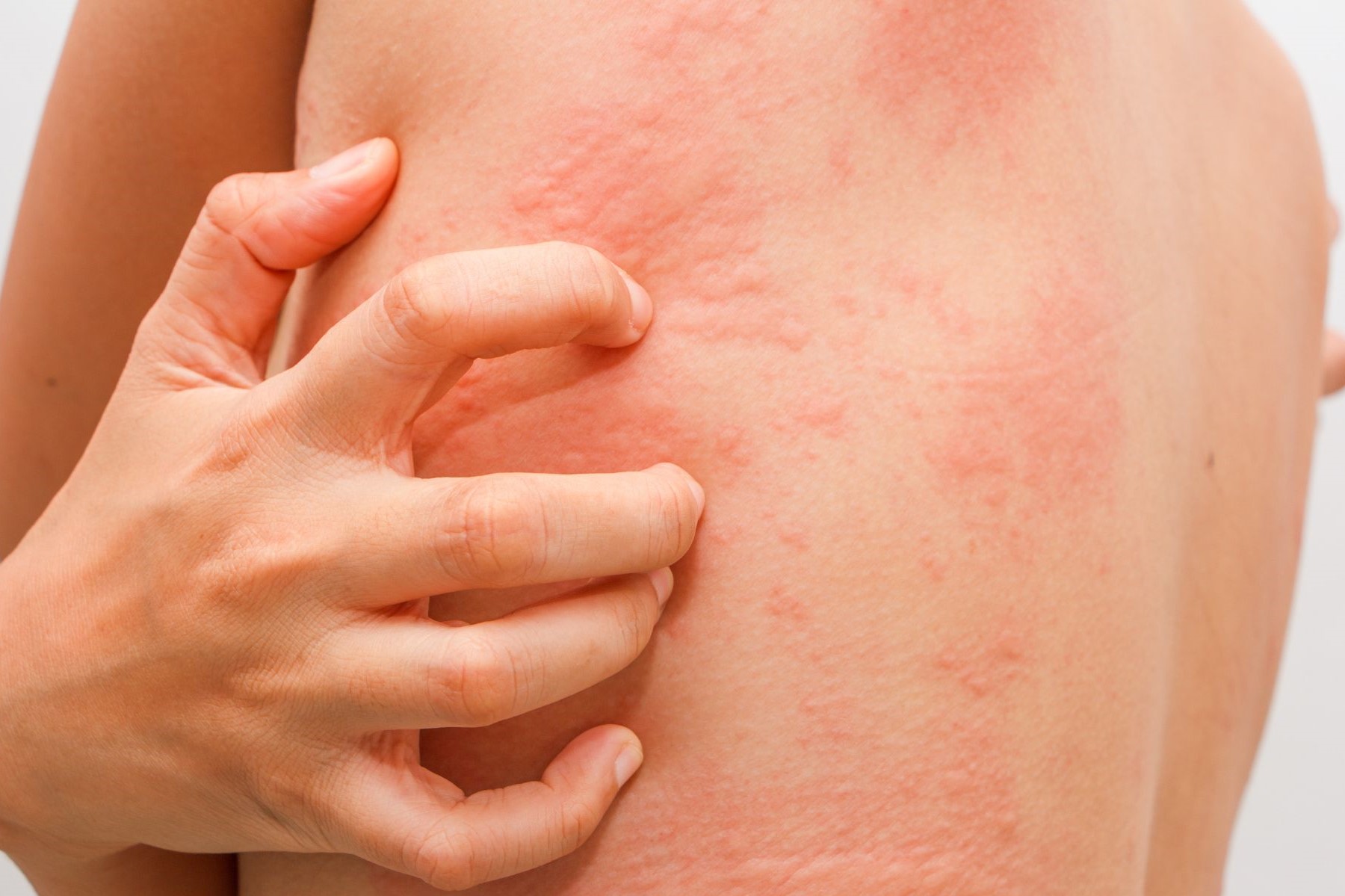
Cold urticaria: let's find out 5 things about 'cold allergy'
Can one be sensitive to cold? The answer is yes. Cold urticaria tells about the condition of many people
It may sound strange, but for some people, cold temperatures can provoke skin reactions characterised by warm, itchy pomphi, widespread swelling and in rare cases anaphylactic shock.
This way the skin reacts is called cold urticaria; it is not a true allergy, but a hypersensitivity to cold.
1) Cold urticaria, often called ‘cold allergy’ is not an allergic reaction
Cold urticaria is a particular condition that affects the skin when exposed – as the name implies – to cold.
Typically, red, round, raised, itchy spots called ponfi (similar to those caused by insect bites) appear within 5-10 minutes.
They may resolve within a couple of hours or last longer, affecting only the skin exposed to the cold or the whole body, and in some predisposed persons, also cause tachycardia, low blood pressure, swelling of hands and feet, abdominal pain, fainting and anaphylactic shock.
In the event of a skin reaction to cold, it is important to consult a dermatologist for a correct diagnosis and identification of the most appropriate course of treatment.
If symptoms such as dizziness, difficulty breathing, sore throat or tongue appear after exposure to cold, it is advisable to go to the emergency room.
2) It affects women more
The disorder occurs more frequently in young adults, more in women than in men, although it can occur at any age.
The cause of this type of urticaria is still unknown; it is speculated that it may be due to a family predisposition, the presence of infectious diseases or changes in the immune system (e.g. tumours, hepatitis).
It is a rare reaction, however, and for this reason studies are limited.
Food and/or respiratory allergies often complicate the clinical picture.
3) Heat does not always improve the situation
Heat generally leads to remission of the pomphi in a short time, but in the case of hypersensitivity even to heat, the high temperature can worsen the situation.
Again, the causes are not clear, but it is assumed to be due to the release of histamine, a substance that among its many functions intervenes in allergic and inflammatory reactions.
4) Rain, wind, swimming pool and cold food also among the triggers of cold urticaria
In addition to low temperatures, other causes that chill the skin and can lead to the onset of urticaria are icy wind, rain, snow, bathing in cold water (swimming pool, sea, lake, rivers), cold showers, holding cold objects, consuming cold food and drink (which can lead to swelling of the lips and throat).
Other predisposing conditions are exposure to cold rooms and surgery under general anaesthesia.
To prevent this particular type of urticaria, it is necessary to avoid triggers by protecting the skin from low temperatures, weather and cold water.
In the winter months, it is important to cover the face, hand and head with scarves, gloves and a hat and to apply protective and nourishing creams.
In summer, pay particular attention to the temperature of the water (shower, bath, pool) and drinks.
Depending on the situation, it may be useful to use antihistamines, cortisone and more specific drugs as indicated by the dermatologist, and it may also be advisable to carry an adrenalin auto-injector to use in an emergency on the precise indication of the specialist in people who have developed severe episodes.
5) Cold urticaria disappears in 5 years on average
In most cases cold urticaria resolves spontaneously after weeks.
If it persists beyond 6 weeks, it becomes chronic.
There are few cases of recurrent disease and the data currently available in the literature indicate an average resolution within 4 to 5 years and in any case no more than 10 years.
The diagnosis of cold urticaria is made by using the Temp Test, a specific device capable of determining the threshold temperature at which the skin reaction is triggered, or by using the so-called ice cube test.
During the test, a piece of ice is pressed against the forearm, usually for 3-4 minutes: if oozing appears, it is considered positive.
However, this investigation does not provide information on the temperature and exposure time required for any symptoms to develop, which are important data for understanding the severity of the disease and individual sensitivity, and not all patients respond to the test, complicating the diagnosis.
Read Also
Emergency Live Even More…Live: Download The New Free App Of Your Newspaper For IOS And Android
What Is Urticaria (Hives)? The Role Of Histamine And How To Intervene
Exposure To Cold And Symptoms Of Raynaud’s Syndrome
Anaphylactic Shock: What It Is And How To Deal With It
Psoriasis: What It Is And What To Do
Respiratory Or Food Allergies: What Is The Prick Test And What Is It For?
Wasps, Bees, Horseflies And Jellyfish: What To Do If You Get Stung Or Bitten?
Psoriasis, An Ageless Skin Disease
Psoriasis: It Gets Worse In Winter, But It’s Not Just The Cold That’s To Blame
Childhood Psoriasis: What It Is, What The Symptoms Are And How To Treat It
Topical Treatments For Psoriasis: Recommended Over-The-Counter And Prescription Options
What Are The Different Types Of Psoriasis?
Phototherapy For The Treatment Of Psoriasis: What It Is And When It Is Needed
Urticaria Affects At Least 1 In 5 People: What It Is And How To Treat It
Seasonal Illnesses: What To Eat When You Have Flu?
Plaques In The Throat: How To Recognise Them
Tonsillitis: Symptoms, Diagnosis And Treatment
Sore Throat: How To Diagnose Strep Throat?
Sore Throat: When Is It Caused By Streptococcus?
Pharyngotonsillitis: Symptoms And Diagnosis
The Post Covid Era: Flu, How Long Do Symptoms Last?
Eczema Or Cold Dermatitis: Here’s What To Do
False Myths And Hamletic Doubts: Does A Low Temperature Cause A Cold?


